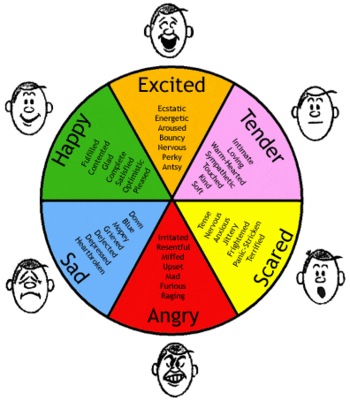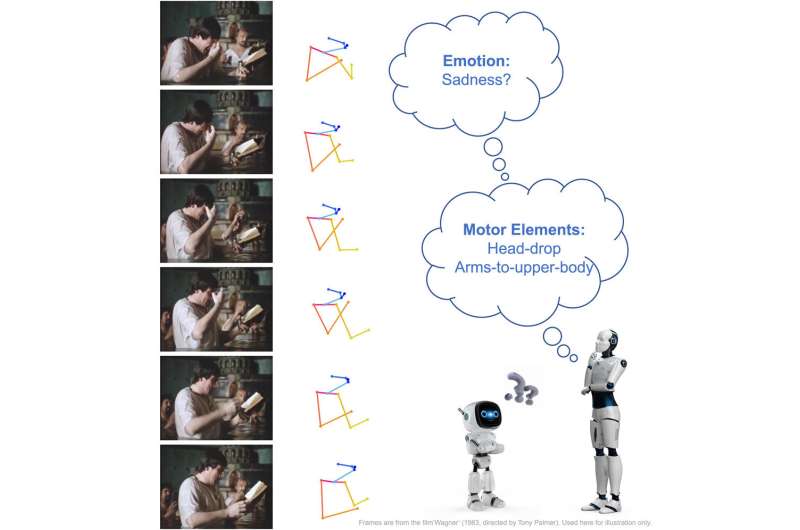
Admit it: Sometimes you just want to punch your PC, or slap your smartphone, or knock your notebook.
We all get riled by technology once in a while, with all those feeble batteries, endless updates and spinning wheels of death.
But what if our devices could see it coming? What if they could pick up the tics and tells of our brewing anger — or, for that matter, any other emotion — and respond accordingly?
It’s not as crazy as it sounds. To hear experts tell it, this is where technology is going. Researchers and companies are already starting to employ sensors that try to read and respond to our feelings.
While this sort of technology is still in its early days, the possibilities seem many. One day, your PC might sense your frustration when a program keeps crashing and politely suggest that you take a walk while it contacts tech support. Or your smartphone could sense that passions — of one sort or another — are running high and, in response, disable messaging. Or your car might discern an early case of road rage and soften the car’s lighting and stiffen its steering.
Researchers have been trying to read emotions for years by monitoring facial expressions. But a new generation of sensors can judge emotion through people’s skin and breath.
One area where this could really take off is gaming. Last month, engineers at Stanford University outfitted an Xbox game console with sensors that monitor players’ emotions and alter the game play accordingly.
Corey McCall, a doctoral candidate who oversaw the experiment, said that the modified controller he built tapped into people’s autonomic nervous system — the part of the brain that operates largely below our consciousness to control things like heart rate and breathing. By watching this control system, the sensors could tell if people were happy or sad, excited or bored.
Mr. McCall told me that to quantify emotions, his sensors measured how long it took for a slight electrical current to pass from one arm to another. “If you’re tense, it’s going to be more difficult for the current to pass through than if you’re relaxed and calm,” he explained.
In the past, the only way to get such readings was with an electroencephalogram. But EEGs must be attached to a person’s head. And, even then, they only work with a special gel — and, sometimes, only if the subject’s head is shaved. In Mr. McCall’s experiment, all it took was an innocuous sensor.
The Latest on: Emotion sensing machines
[google_news title=”” keyword=”Emotion sensing machines” num_posts=”10″ blurb_length=”0″ show_thumb=”left”]
via Google News
The Latest on: Emotion sensing machines
- NASA Science Chief invites all to ‘do NASA science’on April 24, 2024 at 12:04 pm
Her dad planted a fascination with space in his daughter, and now Fox is chief of NASA’s Science Mission Directorate, with jurisdiction over more than 140 missions exploring just about everything in ...
- Smile, You’re on an In-Car Camera!on April 21, 2024 at 5:00 pm
Brackenbury said Gentex is using AI machine vision to learn more about the health and emotions of vehicle occupants ... to definitely see that start coming into cars as there are more sensing ...
- This AI gadget let me speak in languages I don’t know or understandon April 20, 2024 at 9:00 am
The Timekettle X1 is a gadget dedicated solely to helping you speak and translate different languages. But is it any good? Here's what happened when I used it.
- ASTRI's Wins 23 Awards Geneva Inventions Expoon April 20, 2024 at 1:31 am
The Hong Kong Applied Science and Technology Research Institute (ASTRI) has won 23 accolades at the 49th International Exhibition of Inventions Geneva, including 1 "Gold Medal with Congratulations of ...
- Ten computational design projects by DesignMorphineon April 18, 2024 at 9:00 am
A project set in a speculative future in which humans and plants live in harmony is included in Dezeen's latest school show by students at DesignMorphine.
- Smart Eye Publishes its Annual Report 2023on April 18, 2024 at 5:31 am
GÖTEBORG, SWEDEN / ACCESSWIRE / April 18, 2024 / (STO:SEYE)(OTC PINK:SMTEF)(FRA:SE9) The Annual Report is attached in this press release but is also available through the company's website: ...
- Sensing a need: Sentara Williamsburg hospital certified as ‘sensory-inclusive’on April 13, 2024 at 6:01 am
At a hospital, triggers such as bright ceiling lights and beeping medical machines can be overwhelming for some people. Sentara Williamsburg Regional Medical Center is trying to ease that.
- The government announced winners of a contest to tell real voices from deepfake audioon April 10, 2024 at 2:01 am
Four organizations won a FTC contest for their tools that help tell real audio clips from deepfakes. The winners' approaches illuminate challenges AI audio deepfakes pose.
via Bing News










